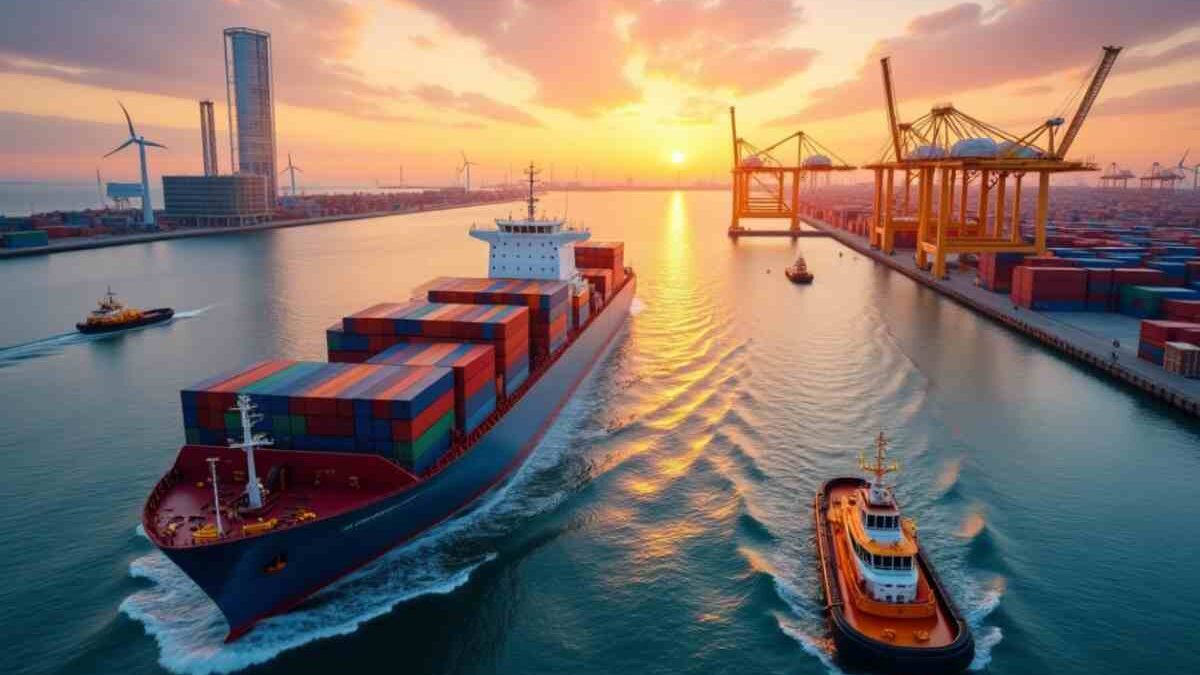The Future of Logistics: How Technology Is Shaping the Shipping Industry
Recently, the logistics industry has undergone a huge shift driven by the rapid development of technology. From digital platforms to innovative supply chain management tools, tech is redefining how goods are shipped and delivered, promising faster, more accurate, and cost-effective solutions.
Table of Contents
Digital Platforms: Streamlining Operations with Cloud-Based Solutions
The rise of digital platforms and cloud computing is one of the most notable shifts in logistics. These platforms enable real-time communication and collaboration between manufacturers, suppliers, and distributors, allowing them to streamline the entire shipping process. Cloud-based software options make it easier to manage inventory, track shipments, and coordinate logistics teams, all from a single interface.
As logistics companies adopt cloud technology, they can significantly improve the speed of their operations. These systems allow for quicker decision-making, as they provide up-to-date information and insights on stock levels, shipping routes, and delivery timelines. Moreover, the flexibility of cloud-based systems means that logistics companies can scale their operations more easily, adapting to fluctuating demand and optimizing processes as needed. As logistics companies embrace digital platforms for streamlining operations, services like Shiply shipping services are providing efficient ways to connect users with reliable transport providers for their shipping needs.
3D Printing: Reducing Shipping Needs and Enhancing Customization
One of the emerging technologies in logistics is 3D printing, which is changing the way businesses approach manufacturing and shipping. Instead of relying on traditional methods of production, companies are increasingly using 3D printing to make products on-demand, directly at the point of use. This reduces the need for shipping goods over long distances and can lower overall transportation costs.
For example, companies in the automotive and aerospace industries are using 3D printing to produce spare parts and components on-site. This not only reduces the environmental impact of shipping but also allows for greater customization and faster production times. As 3D printing technology gets better, it has the potential to disrupt traditional supply chains and further reduce the reliance on large-scale shipping.
Drones and Delivery Robots: The Next Frontier in Last-Mile Delivery
Last-mile delivery—the final step in the shipping process—is one of the most challenging and costly aspects of logistics. However, new technologies, such as drones and autonomous delivery robots, are paving the way for faster and more cost-efficient solutions.
Drones, for instance, are already being used in some regions to deliver small parcels quickly and efficiently, bypassing traffic and reducing delivery times. Companies like Amazon and UPS are testing drone delivery systems that can carry packages directly to customers’ doorsteps, especially in urban or remote areas where traditional delivery methods can be slower and more expensive.
In addition to drones, autonomous delivery robots are being deployed in various cities to handle small deliveries, such as groceries or meals. These robots can navigate sidewalks and avoid obstacles, providing an affordable and eco-friendly alternative to conventional delivery vehicles.
Sustainability and Green Shipping: Eco-Friendly Solutions for a Greener Future
As environmental concerns grow, sustainability has become a key focus for the logistics industry. Companies are increasingly adopting green shipping solutions to bring down their carbon footprint and improve the environmental impact of their operations. Electric vehicles (EVs) and alternative fuel sources are helping to cut down emissions in the transportation sector, while eco-friendly packaging solutions are also gaining traction.
The push for sustainable logistics also extends to supply chain transparency, with companies striving to reduce waste and optimize routes to minimize fuel consumption. By embracing green technologies, logistics companies are not only helping the environment but also gaining a competitive edge, as consumers and businesses alike prioritize sustainability in their purchasing decisions.
Big Data: Leveraging Insights for Smarter Shipping
In the age of information, data is an invaluable resource for improving logistics operations. The use of big data allows logistics companies to gather and analyze vast amounts of information from various sources, such as customer preferences, shipping trends, and weather patterns. This data can then be used to predict potential disruptions, optimize delivery schedules, and enhance inventory management.
By leveraging big data, companies can gain deeper insights into customer behavior, enabling them to personalize their services and make the customer experience better. Predictive analytics can also help find potential issues before they arise, allowing logistics providers to proactively address problems and reduce the risk of delays.
Looking Ahead: A Future of Smarter, More Efficient Logistics
From the adoption of digital platforms and 3D printing to the rise of autonomous delivery systems, these innovations are set to redefine how goods are shipped and delivered across the globe. The future of logistics is smarter, greener, and more connected, paving the way for a faster, more efficient shipping experience. While there are still challenges to overcome, technology is undoubtedly the driving force behind the transformation of this critical industry.

